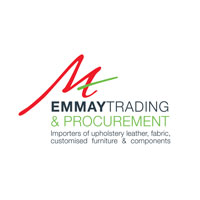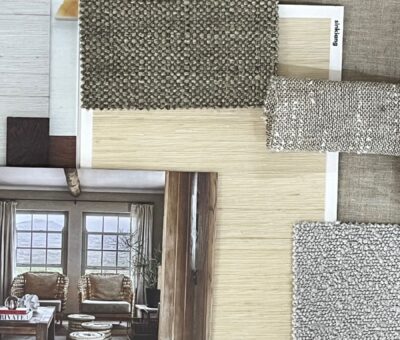Emmay Trading: The Ultimate Leather Guide
Leather is a classic statement of elegance and a bold expression of flair. It is both durable and functional and can be used in many different applications. It is not confined by colour and print options are limitless. Each individual hide is unique. We asked the professionals from Emmay Trading to share some top tips to understanding and caring for leather.
There is no denying the exceptional beauty and versatility of leather used in interior spaces. To produce consistently exceptional quality leather, it is essential that the rawhide is processed by a tannery that understands the virtues of producing top grain leather and the mechanics of exploiting the natural characteristics of the individual hides.
Leather is not indestructible and can be scratched, cut and marked. Regular use of furniture will result in a certain level of soiling which cannot be avoided. This includes household dust, perspiration and body oils (especially from the hands and the head). For these reasons, routine cleaning and maintenance with effective and safe leather care products are recommended. Leather should also be protected from unnecessary light exposure.
LEATHER TYPES:
ANILINE LEATHER
This is the most natural looking leather, with the natural surface visible. This is the upper layer of the hide which is split into layers by a splitting machine to various thicknesses. This outer layer will show natural scars and hair cell patterns if left as uncorrected natural grain. Aniline leather is coloured only with dye, oils and/or waxes, and not with the surface coating of polymer and pigment. A light surface coating may be applied to enhance its appearance and offer slight protection against spillages and soiling.
SEMI-ANILINE LEATHER
This refers to a more durable leather than Aniline, whilst still retaining a natural appearance. This increased durability is provided by the application of a light surface coating which contains a small amount of pigment. This ensures consistent colour and imparts some stain resistance.
FULL GRAIN PIGMENTED LEATHER
Here the grain surface is left intact before applying the polymer and/or pigment to give the hides the required colouring. The surface coating allows the manufacturer more control over the properties of the leather, e.g. resistance to scuffing or fading.
CORRECTED GRAIN PIGMENTED LEATHER
Full grain hides show an excessive amount of scratches or scars that are further processed by “correcting” the natural grain. After the hides are split to the required thickness, the natural grain is buffed or sanded and replaced with an embossed grain and finish to simulate various hair cell patterns. This resulting effect will look flawless with no natural scars showing, but this is no longer the real or natural grain. The original feel of the natural skin and its durability is reduced with a synthetic grain finish. A surface coating of polymer and pigment is applied to the “corrected” hides to give it the
desired colour.
PULL-UP LEATHER
Leather with a natural appearance which lightens in colour when stretched during wear to produce a unique worn-in effect over time. This leather generally has very little pigment added, and only special oils and waxes are used to achieve the desired effect.
LAMINATED LEATHER
This is a composite of two or more layers of leather, or a layer of leather and one or more layers of another sheet or film of plastics or some other material.
SPLIT LEATHER
This is the middle or lower section of the hide, after splitting, which is finished with a polymer pigmented coating and embossed to mimic a grain leather. Split leather hides should only be used in low stress applications, as they tend to be weaker than grain leather. These hides are generally indistinguishable from corrected grain, pigmented leather, to the naked eye.
Contact: Emmay Trading
You might also like...
-
Stuart Graham Presents The Great Outdoors Collection

The Great Outdoors Collection is inspired by our unique South African lifestyle where we are privileged to be able to spend most of the year ...
-
Embrace the Elegance: The Benefits of Wide Width Sheer Fabrics with Silk House

When transforming a space into a haven of sophistication and style, the choice of window treatments holds a significant influence with Silk House. While traditional ...
-
Design Syndicate Introduces The New Elemental Wallpaper Collection

We are elated to be introducing a stunning new wallpaper range for all decorators and homeowners! The all-new “Elemental” wallpaper collection from Design Syndicate, is ...
-
Neutral Interiors: Timeless Elegance with Eshanima Fabrics.

In a world of endless stimulation, neutral interiors provide spaces for us to catch our breath in. They also embody a timeless elegance that is ...





























